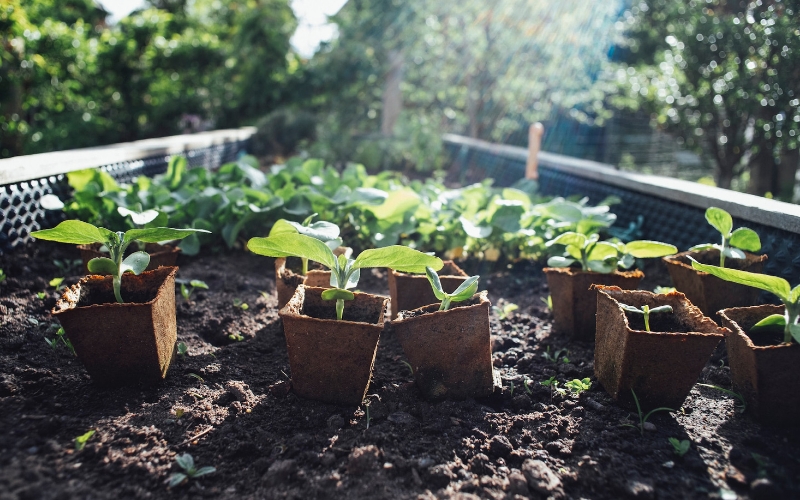Transplant shock is a common problem that can occur when transplanting seedlings in your vegetable garden. Changes in temperature, light, humidity, and soil conditions that seedlings experience when being moved outdoors from their original environment, indoors or in a protected area, can cause transplant shock.
Plants under transplant shock will show wilting, yellowing, or browning of leaves and stunted growth. These signs show that the transplant isn’t able to absorb enough water and nutrients from the soil either due to unavailability in the soil and/or damage to roots. If left untreated plants experiencing transplant shock may eventually die.
Here are 7 common causes of transplant shock in vegetable seedlings and what you can do to prevent transplant shock:
Poor soil quality
If the soil is too sandy or too heavy with clay, it can cause drainage issues or compaction, which can make it hard for the plant to absorb water and nutrients, which may lead to transplant shock. For this reason, it’s important to properly prepare your vegetable garden by adding the necessary amendments before you transplant your plants.
Sudden temperature changes
Plants can undergo shock if they are exposed to sudden changes in temperature, especially if they are moved from a warm and protected environment to a cooler or harsher one.
For this reason, it’s important to make sure that temperatures are warm enough outside for the types of vegetables you are growing and harden off your plants before planting them outside. This is especially important for seedlings that have been grown indoors or in a greenhouse.
Choosing the right time of day and weather to transplant can also help reduce transplant shock caused by temperature changes. The best time to transplant is when the weather is mild and the soil is moist. Avoid transplanting during hot, dry, or windy conditions.
Overcrowding
Overcrowding seedlings can lead to competition for nutrients and water, causing them to experience transplant shock when transplanted in the garden.
To prevent overcrowding, you should keep the correct spacing between your plants, which is different for each type of vegetable, when planting them in your garden. Proper plant spacing for commonly grown vegetables and herbs
Overwatering or underwatering
Both overwatering and underwatering can cause stress on the plant’s roots and contribute to transplant shock. Proper watering practices need to be followed before transplanting and after transplanting to prevent transplant shock. How to correctly water your vegetable plants.
Watering your newly transplanted seedlings properly will help them grow new roots in their new environment and will also help your plants take up as many nutrients as they need to stay healthy.
Mulching your plants is an easy way to make sure that your plants make full use of the moisture provided. You can add an organic mulch like grass clippings or dried leaves, which will naturally decompose and add more nutrients to your soil. You can start with a thin layer and then replenish it every 2 weeks or so, as needed.
Improper or no hardening off
Failure to harden off your seedlings gradually and appropriately can cause transplant shock by exposing them to harsh conditions that they’re not prepared for.
To harden off your seedlings you’ll need to gradually expose your seedlings to direct sunlight, wind, and temperature changes over a period of several days to a week before transplanting them in your garden. This will help them acclimate to their new environment and reduce the risk of transplant shock.
Root damage during transplanting
Any damage caused to the roots of your seedlings can result in transplant shock. It’s important to be extra careful when removing seedlings from their containers to avoid damaging their roots.
For this, you can make sure that the soil in the container is moist so that it would easily come out of the container along with the roots so that you don’t have to use too much force. Once removed from the container, you should plant the seedlings in the ground so that the roots are completely covered with soil and gently press the soil around them.
Exposure to direct sunlight
Seedlings that are not used to direct sunlight can experience transplant shock when exposed to it. It’s important to gradually expose them to sunlight before transplanting them to avoid this issue.
If there is excessive sun and the weather is very hot and dry after you have transplanted your plants, you can provide them with shade using a shade cloth or other covering. This will help reduce stress on the plant and give it more time to recover.
By not allowing your plants to be affected by the causes given above, you can try to prevent transplant shock. It’s important to be patient and give your seedlings time to recover, as they may take a few days or even a few weeks to fully bounce back to normal after they have been transplanted.

